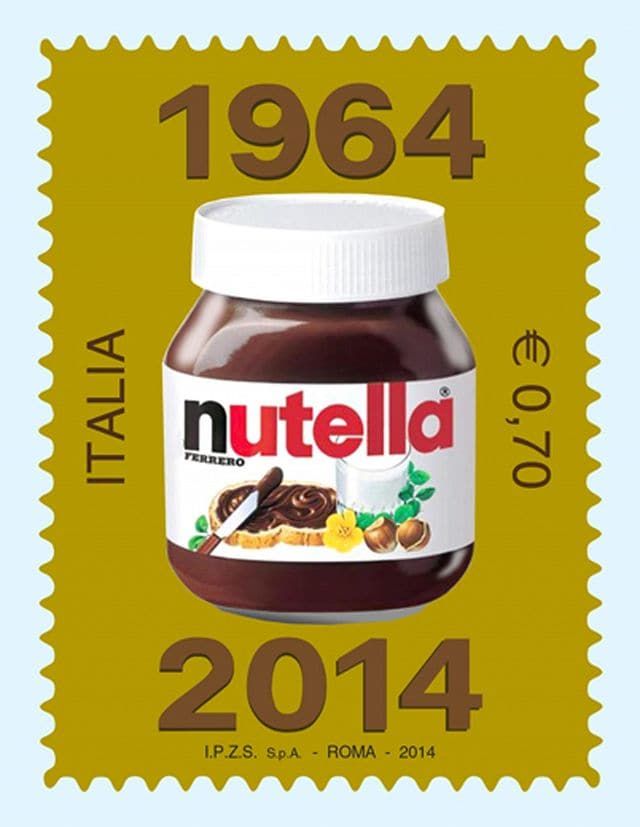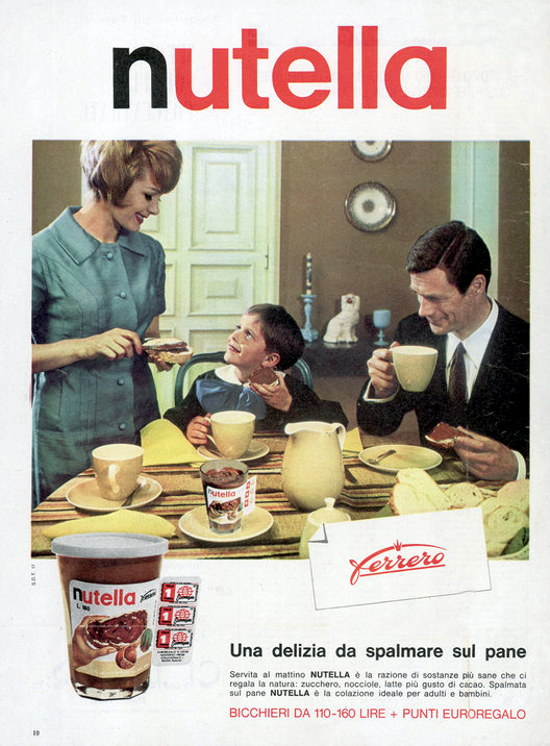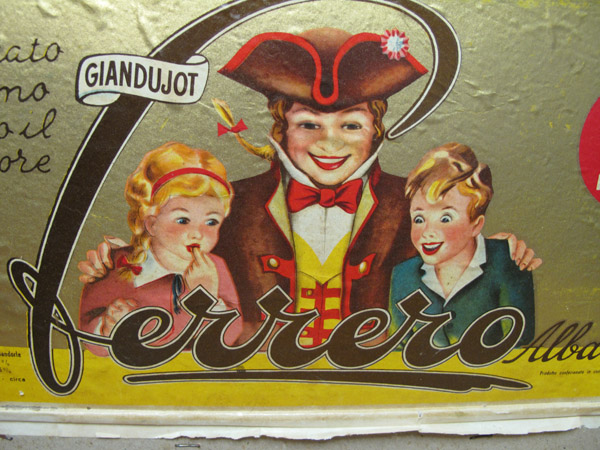Nutella is part of Italian culture like Fiat 500, the markets in each city, the fashion and the beauty.
On April 20, 1964, the first jar of Nutella came out from the Ferrero factory in Alba-Piedmont city. Its origins, however, date back to the 1940s and before.
Pietro Ferrero was a pastry chef in Turin. He had the idea to create a delicious yet affordable chocolate snack to be eaten with bread. He found inspiration from workers who brought bread with tomatoes and cheese for lunch. Pietro thought of giving them something sweet and inexpensive to eat with bread.
In Piedmont at the time there was already a kind of chocolate made with cocoa and chopped hazelnuts: the “gianduja.” In 1800s, the rising cost of cocoa led pastry chefs to partially substitute it with hazelnuts. The mixture was used to make chocolate bars. (Hazelnuts are so abundant in Piedmont that the peasants did not know what to do with them, so they were a perfect ingredient to add to chocolate.)

In 1925 Pietro Ferrero perfected a so-called “pastone” (pastry mesh) of chocolate and hazelnuts (Nutella’s grandfather), very good to eat with bread. It was a hit with children, who became Ferrero’s target market, and their parents.
When the war came, Pietro closed his shop in Turin and took refuge in Alba where he continued working to improve his chocolate mixture, which was still too hard.
The story goes that, in the autumn of 1945, he found a forgotten jar of cocoa butter, added it to the mixture, and created Pasta Gianduja (or Giandujot), which he packaged in the form of a small loaf, wrapped in tinfoil, cut into slices and sold at a cheap price. The ingredients were more or less those of today: sugar, hazelnuts, cocoa and vegetable fats. In stores, the Giandujot cost 4-5 times less than traditional chocolate.
When Pietro Ferrero died on March 2, 1949, his son Michele took over the production.
Legend has it that in the particularly hot summer of 1949 the gianduja melted and some retailers began to sell it as a creamy spread. Another version of the legend is that the product melted in a warehouse in Alba and they were forced to transfer it into jars. Michele Ferrero saw an opportunity and began to sell the jars as “Supercrema.”
In 1962, Italy passed a law banning names with superlatives (such as super-, ultra-, stra-) for consumer products. Ferrero chooses a new brand name: “Nutella” registered in October 1963. The name came from merging the English word “nut” with the Italian suffix “-ella” — a vezzeggiativo, or expression of affection — similar to the English “-ie,” as in “lassie.”

The winning combination came with the colors: the black “N” and the other letters in red. The first jar came out on April 20, 1964, starting the Nutella era.
Going Viral, 1960s Style
Carosello (Italian for “Carousel”) was a wildly popular 10-minute television program made of animated shorts and sketch comedy, each of which was followed by a short commercial message. It had an audience of about 20 million viewers. Carousel developed a campaign that, in today’s terms, “went viral,” and Italy fell in love with Nutella.
In the following years Nutella became a myth, a global phenomenon.

All Italians have memories of spreading Nutella on bread or eating it right from the jar, just as Americans remember their childhood peanut-butter and jelly.
Nowadays, Nutella has become the best-selling spreadable cream in the world, with a production of 365,000 tons per year, and Ferrero products are well-known worldwide.

5 replies on “History of Nutella”
I do remember eating lots of Nutella when I was a child!
Just a great almost every day pleasure moment!!!
A beautiful and interesting story about one of my favorite desserts. Thank you
Thank you :)))
Vero!
Wow. From viral marketing in the 1960s to today, Nutella is beloved!